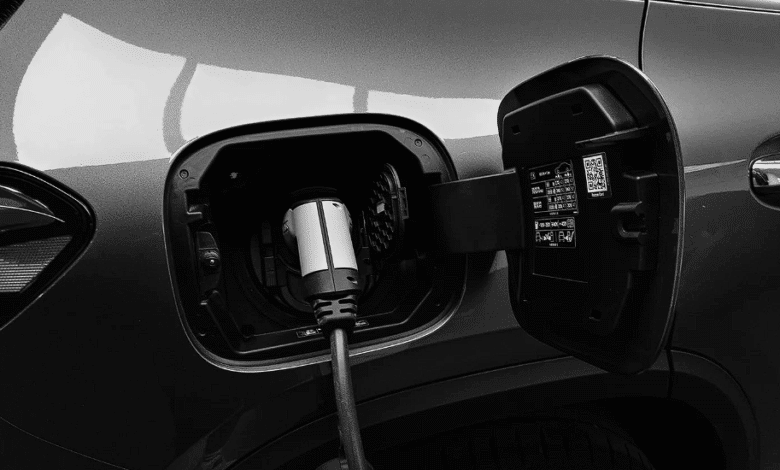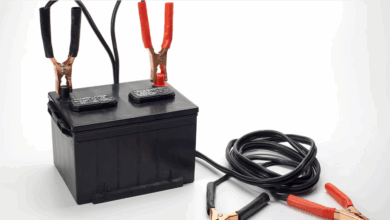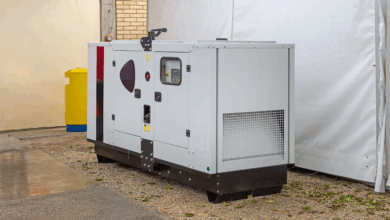Charging an Electric Car with a Generator – Level 1 & Level 2 Explained

Wondering whether it’s possible to charge your EV using a generator? In this guide, I’ll explain how to do it, what you’ll need, and whether it’s actually practical for real-world use.
Can You Charge an Electric Car with a Generator?
Yes, you can—but it depends on several key factors like the generator’s wattage, voltage output, harmonic distortion, and the specific electric vehicle you’re trying to charge. Grounding the generator properly is also essential.
As EVs become more popular, public charging infrastructure still lags behind, especially outside urban areas. For EV owners like me, that can pose a problem—especially during power outages, which are becoming more common across the U.S. in places like California due to extreme weather conditions driven by climate change.
The good news? A high-powered portable generator can serve as a backup charging option for both Level 1 and Level 2 charging.
Why Most Portable Generators Fall Short for EV Charging
Standard portable generators are great for things like powering appliances during a camping trip, running tools, or providing emergency electricity during an outage—but they usually fall short when it comes to charging EVs.
Even with the right adapter for a Tesla or Chevy, most small generators either won’t be recognized by the vehicle’s charging system, or they’ll charge so slowly that it’s not worth the effort.
If you’re serious about using a generator to charge your EV, you’ll need a unit in the 7000 to 10000-watt range, like the Honda EU7000is, which can provide the voltage and wattage needed for a meaningful charge.
Step-by-Step: Charging an Electric Car with a Generator
My Setup for the Test
I tested this using a Honda EU7000is generator and two EVs: a smart electric car and a Tesla Model X.
Why the EU7000is? Because most smaller portable generators only provide 120V and struggle to deliver the amps and clean power needed to charge EVs efficiently. The EU7000is provides both 120V and 240V outputs, making it suitable for both Level 1 and Level 2 charging.
Level 1 Charging (120V) – Smart Car
For my smart car with a 17kWh battery, I used a 120V outlet for Level 1 charging.
Estimated charging time:
From 0% to 100%: around 10 hours
Steps:
- Connect the EV charger to the generator.
- Let the generator run in ECO mode for a few seconds.
- Once stable, connect the charger to the vehicle.
While this works fine, it’s slow—and not fuel-efficient. If your EV supports 240V charging, I recommend using that option for quicker results.
Level 2 Charging (240V) – Tesla Model X
The Tesla Model X has a 100kWh battery and a much more advanced onboard charging system. Forget about using a small 1800-watt generator—it simply won’t cut it.
First Test – Level 1 Charging (120V)
Tesla’s software allows you to control how many amps you draw. I set it to 16 amps at 127V, giving me around 1.8kW of power.
Estimated charge time from empty:
100kWh / 1.8kW = ~55.5 hours
Clearly, that’s not a practical solution unless you’re in an extreme pinch.
Second Test – Level 2 Charging (240V)
Using Tesla’s provided 240V charger, I bumped it up to 247V at 20 amps, or around 4940 watts (4.9kW).
Estimated full charge time:
100kWh / 4.9kW = ~20.4 hours
This is much more manageable—but still far from fast.
Is Charging Your EV with a Generator Practical?
So, is it realistic to use a generator to charge your EV?
Technically, yes—but in reality, only for emergencies. Charging takes a long time and consumes a lot of fuel. Plus, you need a high-output generator, which most people don’t buy solely for EV charging.
Most generator owners use them for camping, RV travel, tailgating, or home backup power. Using them for EVs is a backup solution at best.
Consider a Standby Generator for Reliable EV Charging
If you want to be fully prepared, consider a whole-house standby generator. These systems are designed to provide 10kW or more of clean, stable power, making them ideal for running large appliances—and charging electric vehicles quickly and safely.
If your home is already equipped with one, you’re better positioned to keep your EV charged during blackouts than relying on a small portable unit.




![How to Bypass CO Sensor on Generator – [4-Step Safety Guide]](https://www.generator411.com/wp-content/uploads/2025/08/co-sensor-on-generator-390x220.png)